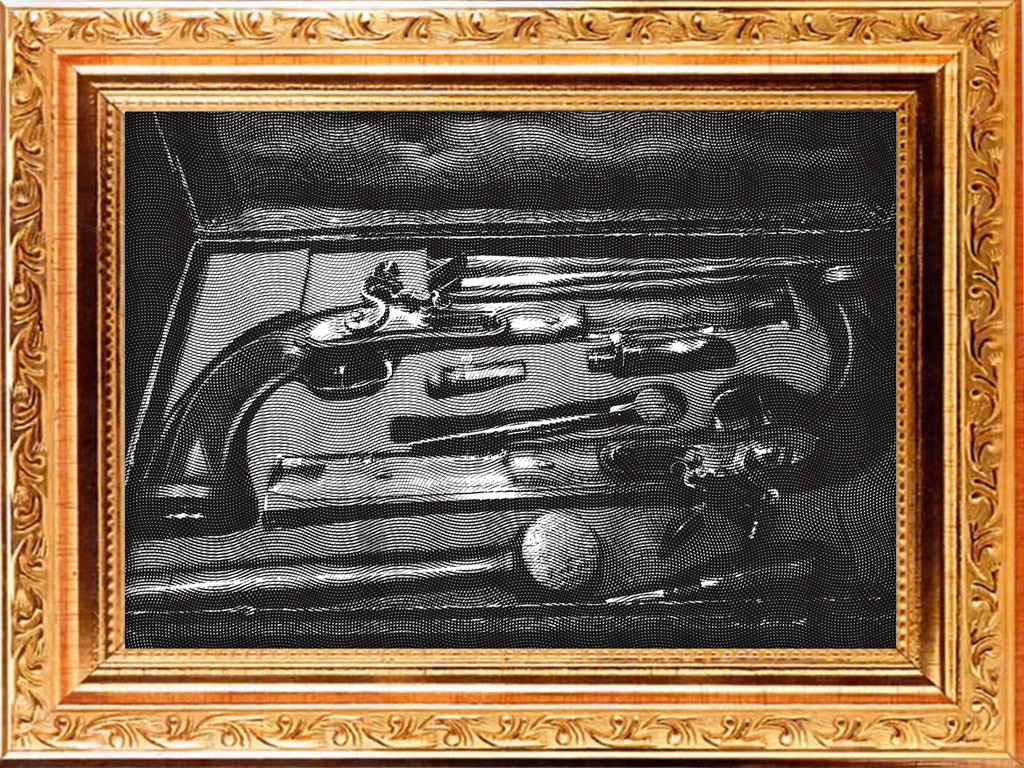
Famous duels are the stuff from which legends are made of. Dueling with pistols might seem cruel and senseless to men of the modern era. A couple of centuries ago, it made perfect sense. It was inextricably linked to male honor. Especially in the South, and before the Civil War, duels were a spectacle. Sometimes attended by hundreds of people. They allowed a gentleman the opportunity to prove his courage and preserve his honor.
The most famous duels involved pistols and a single volley of shots. The duel would be over if neither man was hit. Both men retained their honor through their willingness to risk their lives. There were many reports of duelists aiming at their opponent’s leg or intentionally missing. Satisfying the demand of honor was often sufficient. Sometimes the matter demanded to be settled with the shedding of blood or the loss of life. Approximately twenty percent of all duels ended in a fatality.
In the following three duels, none of the participants was trying to miss. All drew blood, and two of them resulted in a fatality. Up first, one of the most famous duels in American history.
Famous Duels in History
Alexander Hamilton and Aaron Burr

Alexander Hamilton and Aaron Burr. July 11th, 1804.
It happened on July 11, 1804, on a Weehawken, New Jersey cliff that overlooks the Hudson River. Two of the country’s founding fathers met in a duel that would become a crucial part of American folklore. When it was over, Vice President Aaron Burr killed Alexander Hamilton. Hamilton was a revolutionary war hero. As well as a former Treasury Secretary. One of the most famous duels in American history.
While some of the accounts of the duel are contradictory, one thing is for certain. Hamilton received a .54-caliber wound to the abdomen from an English-made Wogdon & Barton flintlock smoothbore dueling pistol. He was dead within thirty-six hours. Today, those walnut, brass, and gold pistols are located in the headquarters of J.P. Morgan Chase, on 277 Park Avenue in New York City.
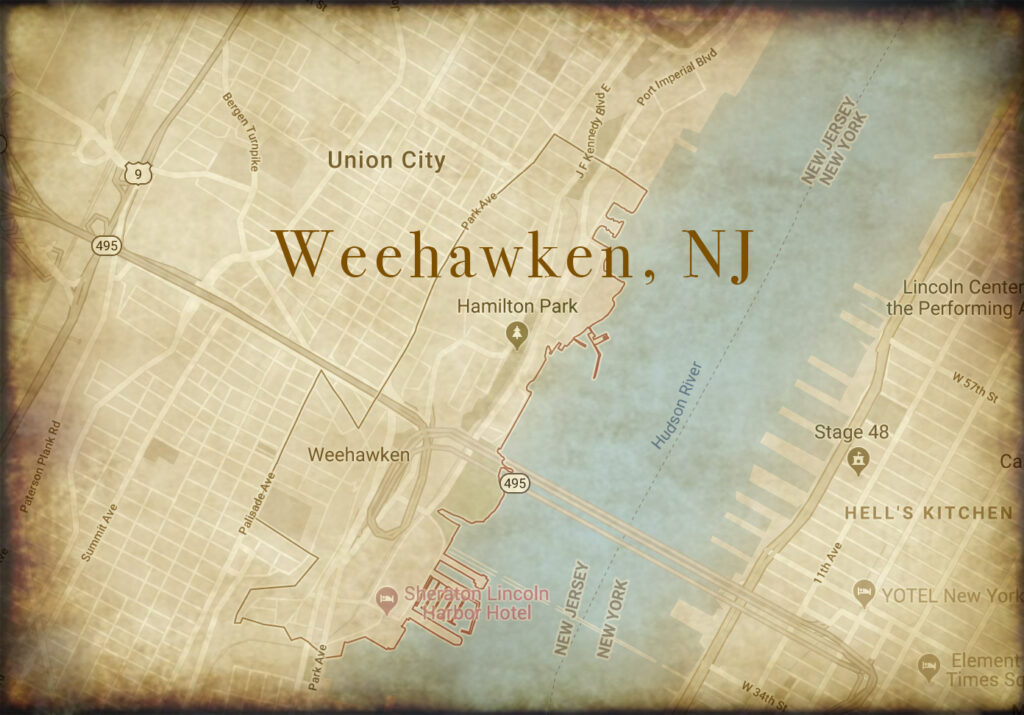
Map of Weehawken, New Jersey.
Historians can neither agree on the events of that infamous day, nor on why it had to happen at all. Suffice it to say that Hamilton and Burr were bitter political rivals. Hamilton had worked to remove Burr’s political power even though Burr was the vice president of the United States. Published in a newspaper was a letter, in which Hamilton demeaned Burr’s character – the final straw for Burr. When Burr asked for an apology, Hamilton refused. Burr then demanded a duel, and, as they say, the rest is history, and lore.
Andrew Jackson and Charles Dickinson
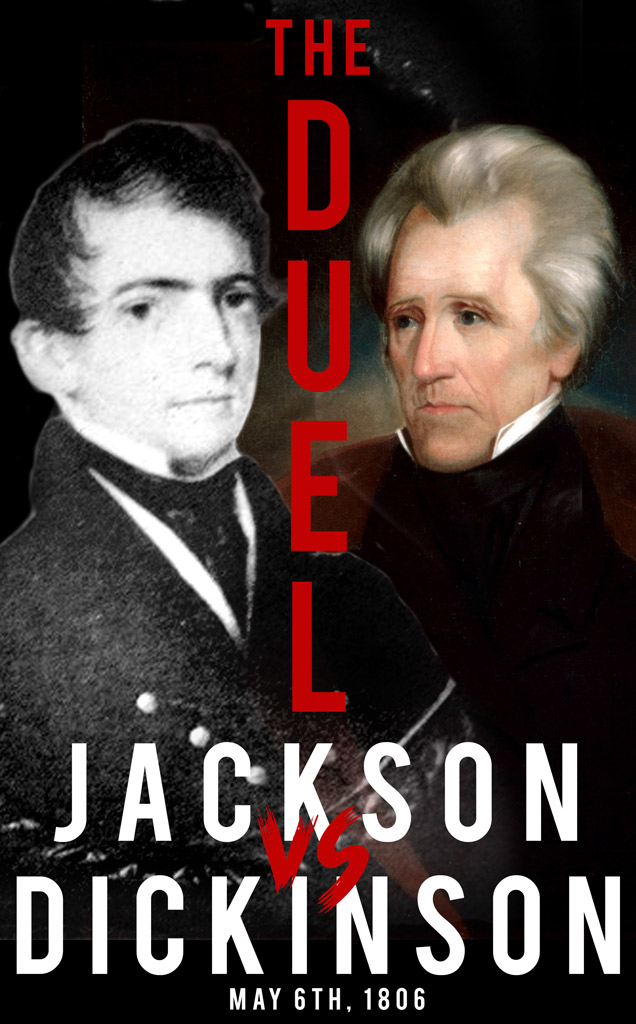
Andrew Jackson and Charles Dickinson. May 6th, 1806.
There is no shortage of polarizing political figures in the United States today. In that regard, nothing has changed since Andrew Jackson was president nearly 200 years ago. Jackson was considered to be a military hero in the War of 1812. He became a staunch supporter of states’ rights and slavery’s extension into new western territories. His role in the forced relocation of Cherokee tribes, which resulted in the deaths of thousands, has damaged his legacy irreparably.
Long before he became the country’s seventh president in 1829, he was in a duel. On May 6, 1806, Jackson participated in a duel at Harrison’s Mills. Located on the Red River in Logan, Kentucky. His opponent was Charles Dickinson, a rival horse breeder, and plantation owner.
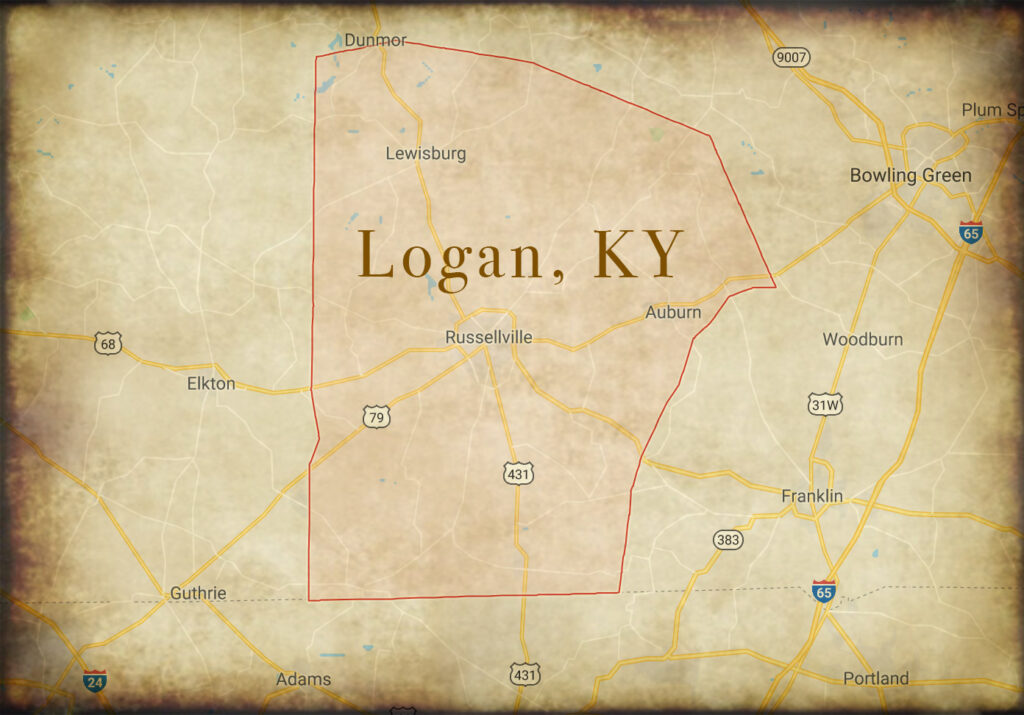
Map of Logan, Kentucky.
Both men already hated one another. Dickinson accused Jackson of reneging on a horse bet, being a coward, and called Jackson’s wife a bigamist. Rachel Jackson had married Andrew without knowing her first husband had not finalized the divorce. After this, Jackson challenged Dickinson to a duel.
As is usually the case, details of the duel are inconsistent. Most historians agree, however, that Jackson provided the dueling pistols. They had nine-inch-long barrels and fired an enormous 70-caliber ball. Here is how the majority of the onlookers reported the duel transpired:
After a signal from their seconds, Dickinson fired, hitting Jackson in the chest. While holding his wound, Jackson attempted to shoot, but his pistol misfired. This should have ended the duel. But, in a serious breach of dueling etiquette, Jackson re-cocked and fired again. The shot killed Dickinson instantly. Jackson recovered. According to lore, the ball was never removed. The famous duel had very little effect on Jackson’s political career.
Sam Houston and General William A. White
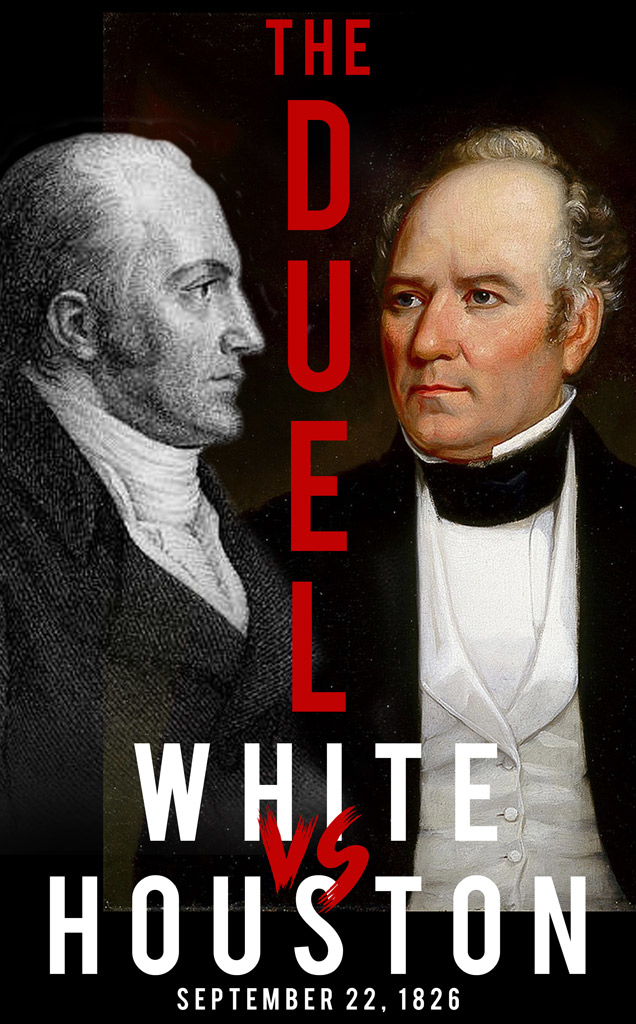
Sam Houston and General William A. White. September 22nd, 1826.
At sunrise on September 22, 1826, in a field near Franklin, Kentucky, Rep. Sam Houston of Tennessee met and seriously wounded Gen. William White in a pistol duel. White was a veteran of the Battle of New Orleans. Tennessee publisher John Erwin hired him for the duel. Erwin wanted to become Nashville’s postmaster. He wanted White to be his stand-in after challenging Houston to the duel.
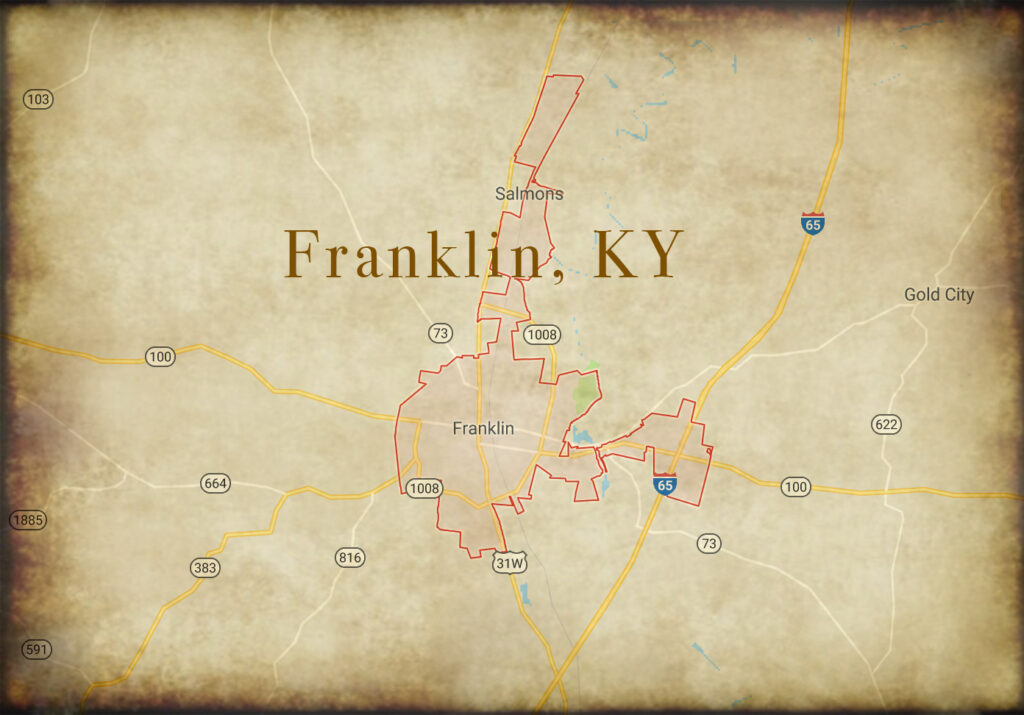
Map of Franklin, Kentucky.
The quarrel began with political rivalries, and, once again, Andrew Jackson was at the center of the storm. Jackson failed in his attempt to become president in 1824. He was bitter at Henry Clay, the Speaker of the House. Clay was instrumental in getting John Quincy Adams elected over Jackson. Jackson asked Houston to impede the appointment of Erwin, who was Clay’s son-in-law.
Houston responded by assailing Erwin in a speech on the House floor. Going as far as describing Erwin as “not a man of fair and upright moral character”. After Houston returned to Tennessee, Erwin hired a professional duelist, Colonel John Smith. He was to challenge Houston for slandering Erwin’s character. Houston rejected the challenge. At which point General White challenged Houston, and he reluctantly accepted.
According to eyewitnesses, the two men squared off at about fifteen paces. Houston shot first, hitting Smith in the groin. The wound, although grave, was not mortal. White lived until 1833. Houston was eventually indicted for killing White, but Governor William Carroll refused to have him arrested or extradited. Those were different times indeed.
To Duel, Or Not To Duel?
Dueling was never fully outlawed in the country. Public opinion brought about the demise of the practice. New laws designated the courtroom as the appropriate place to settle disputes, making bruised reputations a legal matter. Nowadays, it is fully outlawed as no one can consent to be killed.
Many historians believe that the Civil War was at least partially responsible for the demise of famous duels. After all, with all the carnage from those four years, there was probably little stomach for more. And that’s a good thing. The smoothbore flintlocks of the day were relatively inaccurate. This probably helped keep the duel death rate low. But that would certainly not be the case with today’s 9mm ammo in a Glock at 15 paces!

